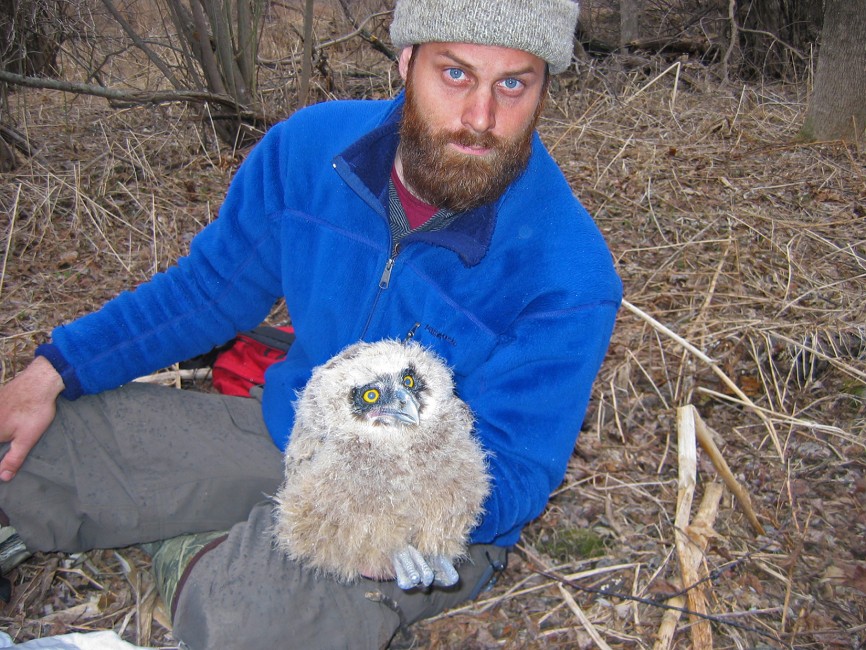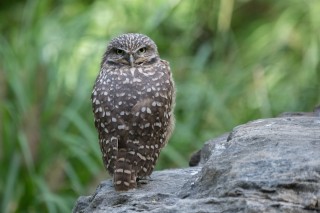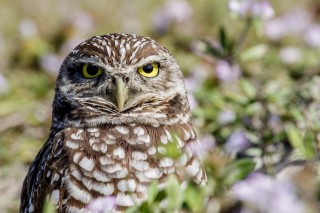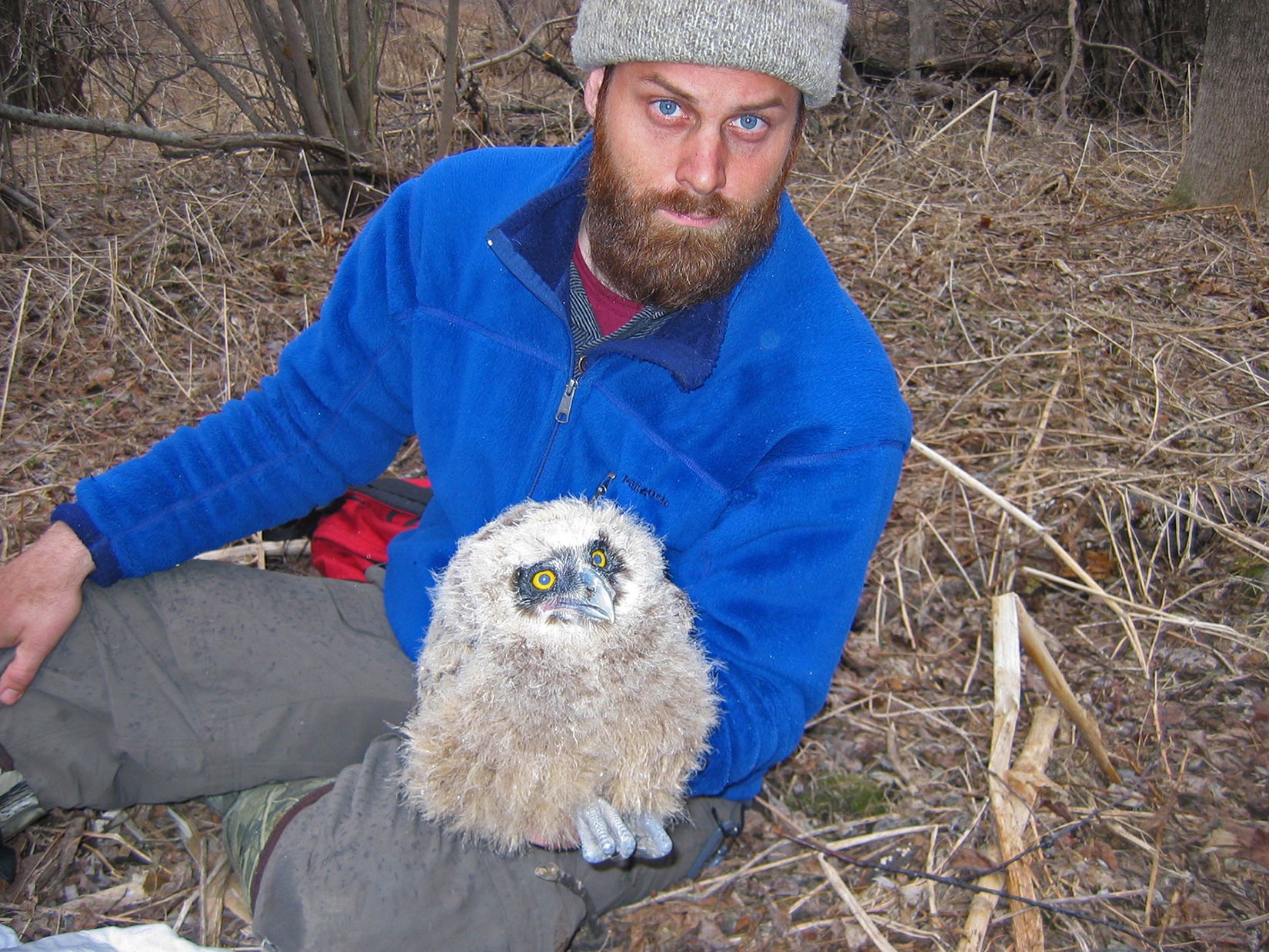
July 31, 2020
Owls of the Eastern Ice
- as seen by -
 Jonathan C. Slaght
@JonathanSlaght
Jonathan C. Slaght
@JonathanSlaght Blakiston’s fish owls are the largest owls in the world – and among the rarest.
Jonathan C. Slaght, a conservation biologist for the Wildlife Conservation Society, is a leading expert on these birds of prey. Slaght and his field team study the elusive owls in the remote forests of the Russian Far East. In normal, non-COVID times, Slaght spends about three months a year in Russia and elsewhere in eastern Asia, where he helps to develop and support avian conservation programs.
Slaght has chronicled his journey to protect Blakiston’s fish owl (Bubo blakistoni) in his book Owls of the Eastern Ice to be released on August 4, 2020 (very timely as it is also International Owl Appreciation Day). We spoke about what inspired him to tell this story.
MAHER: Tell me about Blakiston’s fish owl. What made you want to study this owl?
SLAGHT: I was initially drawn to these birds because they ooze mystery. I first heard about them in the mid-1990s and was instantly mesmerized: these are the largest owls in the world, they eat mostly salmon, and they live in some of the most inaccessible forests of the northern hemisphere. Other than that, not much was known. I just had to learn more.
MAHER: What makes this species unique?
SLAGHT: Well, a number of things. They’re anomalies among owls. When people think of what makes an owl and owl, things like ‘silent flight’ and ‘facial discs’ often jump to mind. These physical adaptations are related to hunting. Owls need to sneak up quietly on a rodent or something in the middle of a dark, quiet forest. Since fish owls are mostly going after aquatic prey, they can be loud in flight, and their facial discs are poorly defined. Think about it: a fish doesn’t know or care that an owl is flapping about in the canopy. And if a fish owl had the same hyper-sensitive hearing of a barn owl, for example, it would go crazy from the sounds of rushing water as it waited along a river bank to ambush a fish.
MAHER: What about this fish owl’s life history? And is there a story about the nestling in your lap (above)?
SLAGHT: Fish owls in Russia are slow breeders: they tend to nest only every other year, and usually only produce one chick. Hatching and fledging success is pretty good for that one chick. But, it takes three years for that single bird to become mature enough to breed – if it can find a mate in that time – so population growth is quite slow.
In the photo, we’d been watching this fish owl nest for about a month, and when the nestling was old enough, pulled it out for a moment to take measurements, draw blood, and give it an identifying leg band. Its mother watched us from a safe distance and returned to the nest soon after we put the nestling back. The nestling was mostly downy fluff at that age.
MAHER: Why did you get involved?
SLAGHT: I teamed up with two ornithologists both named Sergey – Surmach and Avedyuk – because we were all interested in fish owls but not enough was known about these birds to assess their conservation status or to develop a conservation plan. There are also fish owls in Japan, about three hundred miles east of where we work in Russia, and those birds were almost completely wiped out in the twentieth century due to habitat destruction. We wanted to make sure the same thing didn’t happen in Russia, where intensive logging is threatening nest trees and unsustainable fishing is reducing salmon numbers.
MAHER: What are you doing for this species to help protect it? What are your current projects with this species?
SLAGHT: The whole point of my PhD project, which was from 2006-2010 and the basis for the owl book, was to understand the habitat needs of fish owls in order to develop a conservation plan.
Right now, the Sergeys and I are doing a few things stemming from this plan. First, we’re putting nest boxes, actually modified 55-gallon drums, in trees in areas that are otherwise good for fish owls, but currently lack suitable nest trees. Since fish owls are long-lived – there’s a record of a fish owl more than 25 years old in Japan – and they’re also highly territorial, they don’t seem to leave a site if nest trees disappear. They stay and simply don’t breed anymore. We’ve been able to get a few fish owl pairs breeding again this way. We’re also working with protected areas to survey their lands for fish owls, so they know where these birds are and how to protect them and their habitat. Lastly, we’re working with a logging company to reduce the negative impacts of that industry on fish owls.
MAHER: What were some of the challenges of the work?
SLAGHT: A lot of the fish owls we work with live in really hard-to-reach places, and for better or worse, the best times to find them is often winter. This is good because muddy roads and rushing rivers are frozen and easier to travel, but it can also get to be quite cold, as in the minus 30s. A fish owl trip can be up to six weeks of living with 2-4 other people in a wood-heated truck in the woods. The romance of fieldwork can fade quickly under these circumstances.
MAHER: What can others do to help ensure their future?
SLAGHT: Knowledge is important. This is a major reason why I wanted to write this book. People can’t care about something if they don’t know it exists. Others can help by finding out more about fish owls and making sure the wood products they buy and the fish they eat come from sustainable sources. All of these things are important to keep wild places wild, and fish owls happy.




Leave a Comment
Anthony Waldera
August 5, 2020 at 2:09 pm
Owls are one of my favorite birds. How can I support your work? Please give me a call, or send me an email.
Anthony Waldera
612 889-1735
KAS
August 8, 2020 at 5:38 pm
Just appreciate raptors. In 2018 in Ireland at Ashford Castle my husb and I (2 old folk) held Harris hawks and learned very novice stuff. Agree w AW’s comment -Do u need support other than the wildlife org?
WCS Wild View
August 10, 2020 at 10:40 am
Thanks so much for your interest in Jonathan’s work.
Margaret Ross
September 6, 2020 at 4:37 pm
I found this book to be so wonderfully written that I could not put it down. I know nothing about Eastern Russia or the fish owl, but it just captured me. I mention that I was reading this book to a childhood friend in Gilbertsville, NY and she told me that Jon Slaght was a school friend of her son, Nicholas Hanlon. He had been to Gilbertsville visiting. I am going to send a small donation and I would like it to go to the Fish Owl Project in Eastern Russia. I think a saw a place somewhere to donate so I shall do that right now.
Margaret Ross
juan carlos
December 10, 2022 at 2:36 pm
Marvelous book.
Joe Peacock
May 1, 2024 at 2:08 pm
Great book, Jon, really a fun read!!! I didn’t expect that in a book about stalking owls in a vast wilderness, but that’s because I expected you were probably alone (you often were not) and the proximity to rivers and all of their vagaries really brought it all alive. And, of course, the owls themselves are so elusive and magical. I read it years ago — sorry I haven’t mentioned it until now. Please come and visit us in VA when you can!